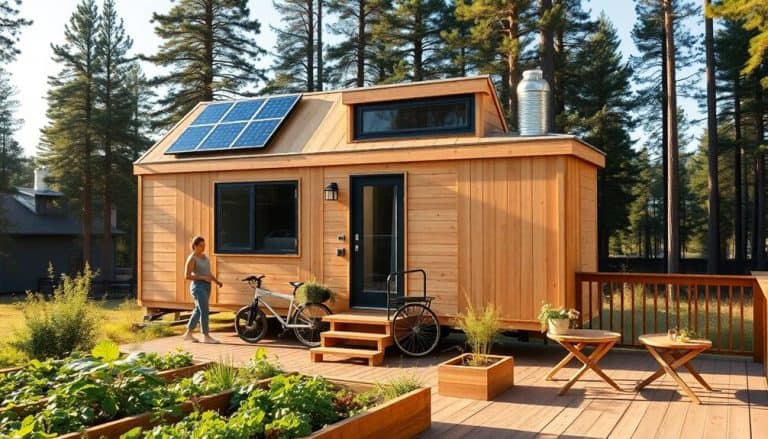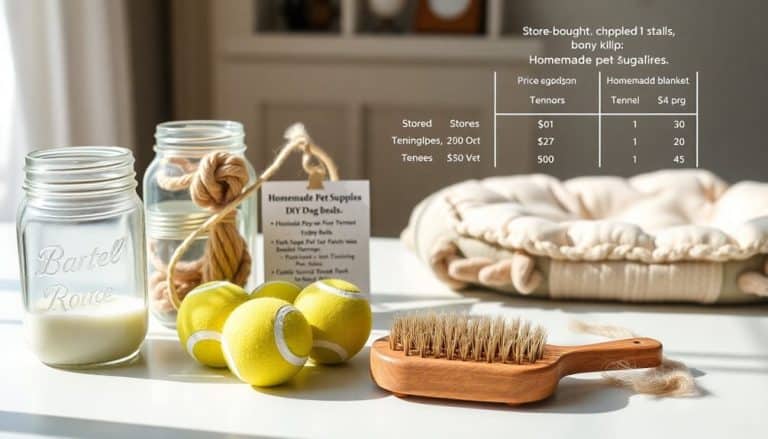This website contains affiliate links. Some products are gifted by the brand to test. As an Amazon Associate, I earn from qualifying purchases. The content on this website was created with the help of AI.
You’ll discover significant savings by embracing eco-friendly habits that benefit both your wallet and the planet. Start with energy-efficient LED bulbs that use 75% less power and install programmable thermostats to cut HVAC costs by 10%. Reduce water waste with low-flow fixtures and fix leaky faucets immediately. Shop with reusable containers, buy in bulk, and support local farmers’ markets for package-free produce. Consider biking, carpooling, or public transit to slash transportation expenses. Compost food scraps and preserve seasonal produce to minimize waste. These sustainable choices offer just a glimpse of the money-saving potential of green living.
Key Takeaways
- Switch to LED bulbs and programmable thermostats to reduce energy costs while cutting household carbon emissions significantly.
- Use reusable containers and shop at farmers’ markets to minimize packaging waste while supporting local producers.
- Install low-flow fixtures and fix leaks immediately to reduce water consumption and lower monthly utility bills.
- Start composting food scraps to create free fertilizer while reducing household waste and greenhouse gas emissions.
- Choose public transit or biking over driving to save on transportation costs while decreasing your carbon footprint.
Energy-Saving Home Hacks
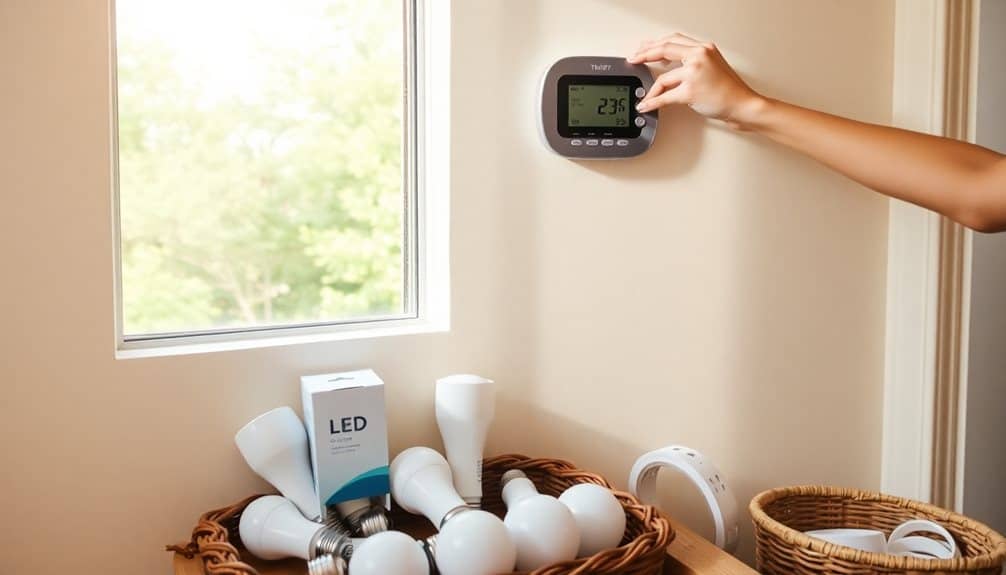
Three simple changes to your daily routine can dramatically reduce your home’s energy consumption and utility bills. First, switch all your light bulbs to LED alternatives, which use 75% less energy and last 25 times longer than traditional incandescent bulbs. While LEDs cost more upfront, they’ll save you hundreds of dollars over their lifetime while reducing your carbon footprint.
Next, install a programmable thermostat to automatically adjust your home’s temperature based on your schedule. Set it to reduce heating or cooling when you’re asleep or away, and you’ll cut your HVAC energy usage by up to 10% annually. Many smart thermostats even learn your preferences and optimize settings for maximum efficiency. Today’s LED fixtures deliver 1050 lumens output while using just 12 watts of power, compared to 100-watt traditional halogen bulbs.
Smart Water Conservation Tips
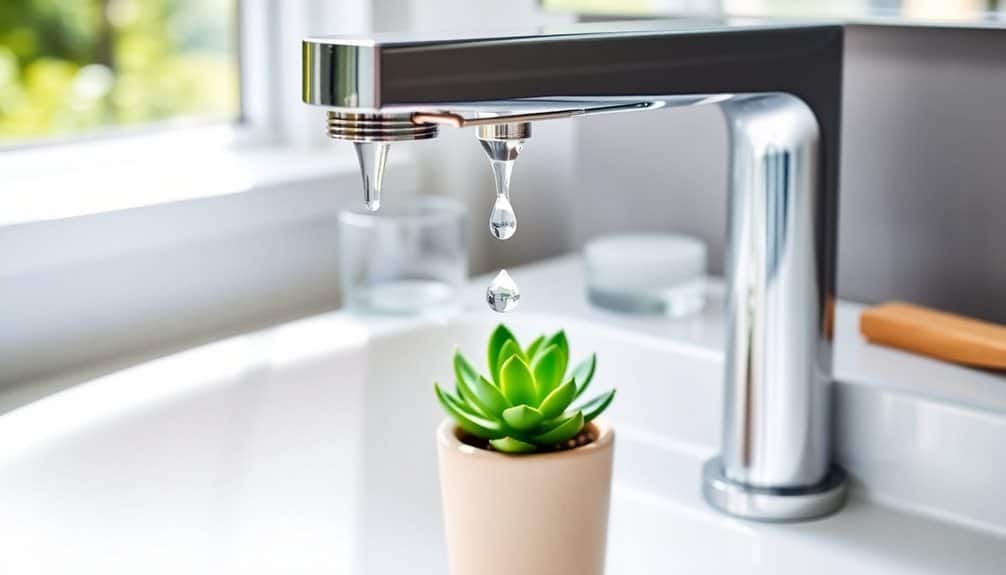
You can slash your water bills and protect this precious resource with a few proven conservation strategies. Start by installing low-flow showerheads and faucet aerators, which can reduce water usage by up to 50% without compromising pressure. Fix leaky faucets immediately – even a small drip can waste hundreds of gallons monthly. Consider installing a dual-flush toilet or placing a water displacement device in your tank to reduce water per flush.
In your kitchen, run your dishwasher only when it’s full and skip pre-rinsing dishes – most modern machines don’t need it. Collect running water while waiting for it to heat up, and use it for plants or cleaning. Install a rain barrel to capture roof runoff for garden irrigation, and water plants early morning or evening to minimize evaporation.
Choose drought-resistant plants for your landscape and group them based on water needs. Apply mulch around plants to retain moisture and reduce watering frequency. Consider replacing portions of your lawn with native plants or xeriscaping. When washing your car, use a bucket and sponge instead of running water, or visit a car wash that recycles water. Transform your outdoor space into an eco-conscious oasis by installing eco-friendly rain barrels that help conserve water while nourishing your garden.
Zero Waste Shopping Strategies
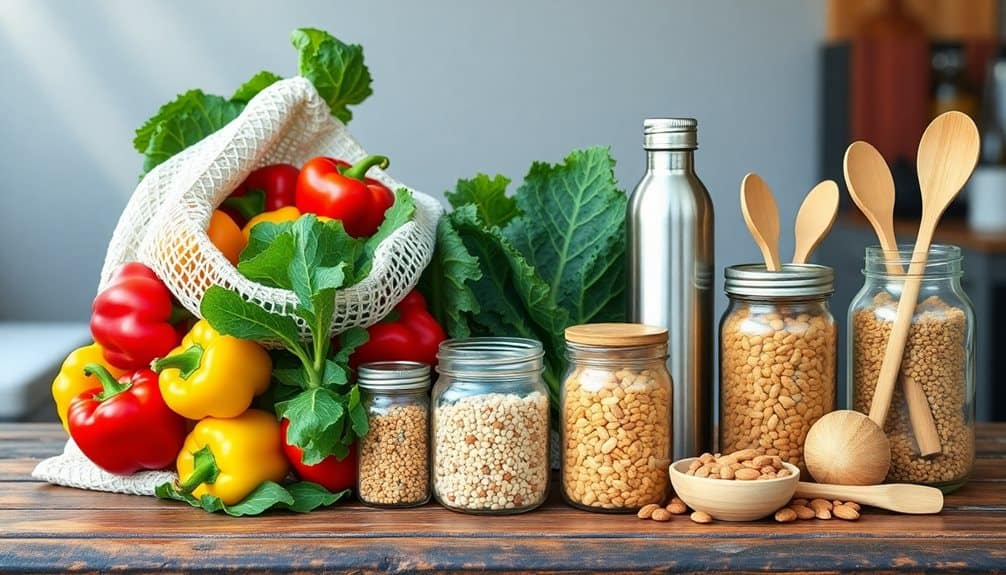
While saving water helps protect our environment, reducing waste at the source starts with smarter shopping habits. You’ll save money and reduce landfill waste by bringing reusable bags, containers, and produce mesh bags to stores. Many bulk food shops now encourage customers to fill their own jars with everything from grains to cleaning supplies.
Before shopping, make a detailed list and stick to it. This prevents impulse purchases and food waste. Choose products with minimal or no packaging, and opt for items in glass or metal containers that you can easily recycle or repurpose. When buying produce, select loose items instead of pre-packaged ones.
Shop at farmers’ markets and local stores that support package-free shopping. You’ll find fresher produce without plastic wrapping, and you can often buy exactly the amount you need. Consider joining a food co-op where you’ll have access to bulk items and like-minded shoppers. Keep a zero-waste kit in your car with containers, bags, and jars so you’re always prepared. When you must buy packaged items, choose concentrated products or larger sizes to reduce packaging waste per use. For garden maintenance, installing smart irrigation systems can significantly reduce water consumption while keeping your plants healthy.
Sustainable Transportation Solutions
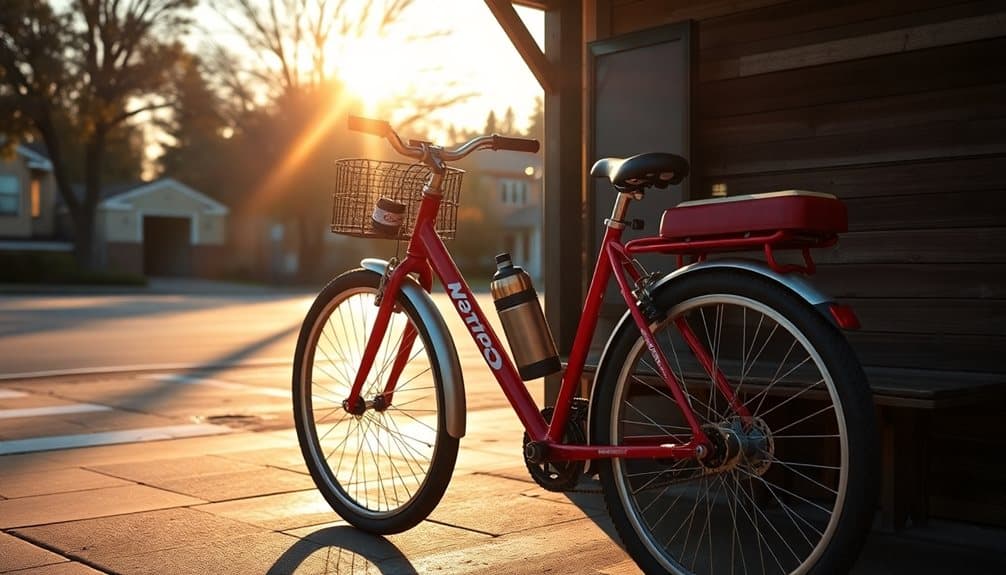
Smart transportation choices can dramatically reduce both your carbon footprint and monthly expenses. By combining eco-friendly transport options with money-saving strategies, you’ll make a significant impact on both the environment and your wallet.
Consider switching to public transit for your daily commute. A monthly transit pass often costs less than what you’d spend on gas, parking, and car maintenance. If you’re within cycling distance, invest in a reliable bicycle and basic gear – you’ll save money while getting exercise and producing zero emissions. For shorter trips, walking remains the most sustainable and cost-free option.
When you need a car, explore carpooling with colleagues or join a car-sharing service. These alternatives reduce individual vehicle usage while splitting costs among multiple users. If you must own a vehicle, consider an electric or hybrid model – they’re becoming more affordable and offer substantial savings on fuel and maintenance costs. You’ll also benefit from tax incentives and reduced environmental impact.
Like adjusting metal hive stands to uneven terrain, adapt your transportation methods to your environment’s unique challenges. To maximize savings, combine multiple transportation methods. Use a bike for local errands, public transit for commuting, and car-sharing for occasional longer trips. Track your transportation expenses to see the financial benefits of sustainable choices.
DIY Green Cleaning Methods

With natural ingredients from your kitchen pantry, making your own cleaning products cuts both costs and chemical exposure. You’ll need just a few basic items: white vinegar, baking soda, lemon juice, and castile soap. These powerhouse ingredients can replace dozens of expensive, toxic commercial cleaners.
Create an all-purpose cleaner by mixing equal parts water and white vinegar in a spray bottle. Add citrus peels for a fresh scent and enhanced cleaning power. For tough bathroom grime, make a paste with baking soda and water, then scrub away stubborn stains. Unclog drains by pouring 1/2 cup baking soda followed by 1/2 cup vinegar, wait 15 minutes, then flush with hot water.
Your windows will sparkle using a solution of 2 cups water, 1/4 cup vinegar, and 1 tablespoon cornstarch. For wood surfaces, combine 1/4 cup vinegar, 2 cups warm water, and 2 tablespoons olive oil. Don’t forget the power of lemon – half a lemon dipped in salt works wonders on cutting boards and copper pots. These simple solutions not only protect your health but also save you hundreds of dollars annually while reducing plastic waste. Consider using coco coir products as an eco-friendly alternative for scrubbing tough stains and surfaces in your cleaning routine.
Mindful Food Choices

Making mindful food choices benefits both your wallet and the planet’s health. When you’re strategic about your food purchases and consumption habits, you’ll reduce waste while saving money. Focus on buying seasonal, local produce to minimize transportation emissions and support regional farmers. You’ll find these items are often fresher and more affordable than imported alternatives.
Planning your meals in advance helps prevent impulse buying and food waste. Keep a detailed grocery list, buy only what you need, and store food properly to extend its shelf life. Consider growing your own herbs or participating in a community garden to reduce packaging waste and transportation costs.
- Choose plant-based proteins like beans and lentils more often – they’re cheaper than meat and require fewer resources to produce
- Buy in bulk using reusable containers to eliminate packaging waste and save money on pantry staples
- Preserve seasonal produce through freezing, canning, or dehydrating to enjoy local foods year-round and avoid paying premium prices during off-seasons
Remember to compost food scraps and use leftovers creatively to maximize your food budget while minimizing environmental impact.
Frequently Asked Questions
How Do I Convince Skeptical Family Members to Adopt Eco-Friendly Lifestyle Changes?
Ever wonder how many drops of water make an ocean of change? Start small by showing your family the money they’ll save through eco-friendly choices. Share utility bill reductions from LED bulbs, or grocery savings from reusable bags. Track and celebrate these wins together. Frame sustainable choices around their interests – whether it’s saving money, health benefits, or leaving a better world for future generations.
Can Sustainable Living Actually Help Me Get Out of Debt?
Yes, sustainable living can greatly reduce your debt! You’ll save money by cutting energy bills through LED bulbs and better insulation, lowering water costs with efficient fixtures, and reducing grocery expenses by meal planning and growing food. Walking or biking eliminates car payments and fuel costs. Buying secondhand, repairing items, and embracing minimalism naturally decrease spending. These eco-choices create lasting financial freedom.
Which Eco-Certifications and Labels Are Trustworthy When Shopping?
You’ll find most reliable certifications right where you need them most. Look for USDA Organic, Energy Star, and Forest Stewardship Council (FSC) logos – they’re strictly regulated and verified by third parties. Don’t forget Green Seal and ECOLOGO for cleaning products, while Marine Stewardship Council (MSC) guarantees sustainable seafood. Fair Trade certification helps both planet and people, assuring fair wages and sustainable practices.
How Do I Calculate My Household’s Current Carbon Footprint?
You can calculate your carbon footprint using free online calculators from trusted organizations like EPA, WWF, or Nature Conservancy. Enter your data on energy bills, transportation habits, food choices, and waste patterns. Don’t forget to include indirect emissions from purchases and services. Track your results monthly or quarterly to identify areas where you’re making progress and spots that need improvement.
What Financial Incentives or Tax Breaks Exist for Green Home Improvements?
While green upgrades might seem expensive upfront, you’ll find numerous tax incentives to offset costs. You can claim up to 30% of solar panel installation costs through the federal Solar Investment Tax Credit, plus state-specific rebates. Energy-efficient windows, doors, and HVAC systems qualify for tax credits up to $3,200 annually. Don’t forget local utility company rebates for LED lighting, smart thermostats, and energy-star appliances.



